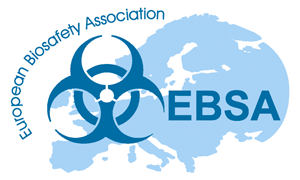About EBSA08 Conference - Barcelona
EBSA08 Conference - Barcelona
|
Welcome address by Josep Santalo, vicerector of Research, |
|
SESSION 1 |
|
Genetic Modification: Emerging Applications and Current Concerns - Part 1 Rapidly developing and changing technology - a challenge for regulators |
|
BREAK |
|
SESSION 2 |
|
Genetic Modification: Emerging Applications and Current Concerns - Part 2 Deliberate release of GM plants: two decades of biosafety experience. Production of biopharmaceuticals in plants: state of the art, expected Problems of transgenesis and cloning biosafety |
|
LUNCH WITH COMMERCIAL SEMINAR |
|
A global company with more than a century of experience in the development of |
|
SESSION 3 |
|
Occupational Health in Biosafety - Part 1 |
|
Occupational Health: Principles and Practices Elizabeth Ptasznik, Canadian Science Centre for Human & Animal |
|
Ergonomics - Fit the task to the person Martin Kuster, Novartis International AG, Basel, Switzerland |
|
BREAK |
|
SESSION 4 Concurrent break-out sessions |
|
Discussion Group 1: Around 90% of accidents have a "human" element and, consequently, huge efforts |
|
Discussion Group 2: Disputes on Biotechnology usually end in sterile exchange of well known arguments. |
|
Discussion Group 3: The session will focus on issues related to medical monitoring and surveillance |
|
AGM |
|
CONFERENCE DINNER |
FRIDAY, APRIL 29TH 2005
|
SESSION 5 |
|
Biosafety Training - Part 1 |
|
Human Factors And How They Influence Safety |
|
Training - "Could Do Better?" |
|
Chalk to Computer: Routes to Competence |
|
BREAK & POSTER SESSION |
|
SESSION 6 |
|
Biosafety Training - Part 2 |
|
Going Dutch in Biosafety: Position and Training of the BSO |
|
Training challenges: how to reach those in most need? |
|
SESSION 7 |
|
EC Biosafety Research / 7th Framework Programme Safe or unsafe? Almost two decades of EC risk assessment on GMOs |
|
LUNCH WITH COMMERCIAL SEMINAR |
|
Safe Management of Work Involving Research Animals: Facility Implications at BSL3, BSL3Ag and BSL4 The increased effort to understand the pathogenesis and host response of emerging |
|
SESSION 8 |
|
The Chris Collins Lecture Chair: Helmut Bachmayer, Novartis Int. AG, Vienna, Austria Biological Safety Concepts of Genetically Modified Live Vaccines |
|
CLOSE OF CONFERENCE BY GARY BURNS, EBSA PRESIDENT 2005-2006 |
